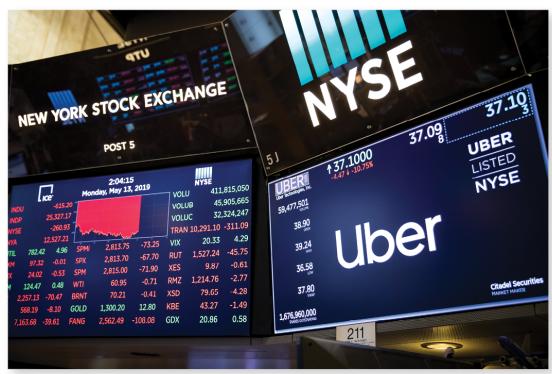August 8, 2019, was a grim day at the San Francisco headquarters of Uber, the global leader
Question:
August 8, 2019, was a grim day at the San Francisco headquarters of Uber, the global leader in ride-hailing companies. That day it announced a staggering loss of $5.2 billion in just the previous 3 months. This was in addition to the loss of more than $1 billion in the first quarter of the year. Equally ominous was news of a significant drop in the annual growth rate in the number of rides provided. These results led some observers to question the companyʼs long-term viability.

For a company that had been the darling of the high-tech business world, this day was a spectacular humbling. Investors had believed that only one company — namely Uber — would come to dominate the ride-hailing industry, ultimately making it very profitable. What had gone so wrong?
Uber was the brainchild of two friends, Travis Kalanick and Garret Camp, conceived after a difficult search for a taxi in Paris. When it launched in 2010 in San Francisco, Uber was the first company to enable ride hailing via a smartphone app. It provided easy access to lower-priced cab rides. Uber expanded rapidly, eventually extending its reach to over 600 cities worldwide. The company focused, in particular, on expansion in cities where the existing taxi market was highly regulated and restricted. Ridership grew explosively, so that by 2019 Uber was completing nearly 14 million rides each day.
But Uberʼs success did not go unnoticed. Seeing the opportunity to make money, some people wanted to become Uber drivers while others wanted to start up rival companies. In 2012, for example, Ly launched a competing service. In Latin America, China, and India, home-grown challengers emerged. Uber responded by rolling out costly initiatives. For example, to keep its ridership high, Uber began subsidizing rides — that is, it provided discount codes and coupons that lowered the price of rides below the actual cost of providing them.
Whether Uber can get back on track — turning its losses around, recapturing its high growth rates of the past, and fulfilling its early promise — remains to be seen.
QUESTIONS
1. How did quantity controls for taxi rides contribute to Uber’s high rates of growth in its early years?
2. Based on what you’ve learned in the chapter, explain whether Uber’s recent difficulties were predictable or the result of bad luck.
3. How likely is it that Uber can regain its past high rates of growth?
4. How has the allocation of surplus changed in this market over time? Who benefitted when Uber began competing with existing taxi companies? Who benefited when rival ride-hailing companies began competing with Uber?
Step by Step Answer:






